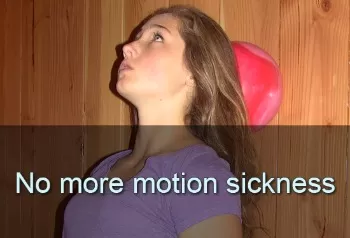New Research Validates Rhythmic Movements
By Sonia Story, M.S.
Did you know that a lack of rhythmic ability is associated with the following challenges?
- Autism (Lense et al., 2021)
- Speech and language disorders (Lense et al., 2021; Ladányi et al., 2020)
- Developmental coordination disorder (Lense et al., 2021; Ladányi et al., 2020)
- ADHD symptoms (Lense et al., 2021; Ladányi et al., 2020)
- Dyslexia (Ladányi et al., 2020)
I often wish I had a giant megaphone to "shout from the rooftops" to get the word out about what is truly beneficial for our children's development and well-being.
Among the most important things are the innate rhythmic movements. There is new research validating their use for helping children with challenges. During development these innate rhythmic movements have a key role in maturing the body, the primitive and postural reflexes, the brain, and the sensory-motor systems. Without these innate rhythmic movements, full and proper development is not possible. When infant development is compromised, it can leave our children with challenges like weak muscles, underdeveloped sensory systems, poor reflex integration, poor posture, depression, inefficient brain development, anxiety, ADHD, and behavior issues.
Unfortunately, there are so many things in our modern lives that hinder the development of infants, and many children miss out on the full spectrum of innate movements they need to thrive.
Here is the hopeful part: We can give the innate rhythmic movements later in life to continue the developmental process, integrate reflexes, and build the foundation for better function. See these excellent examples:
Read about how this adult therapist went from extreme and frequent car sickness to being able to read in the car without nausea. Read the full case study here.
Just a few minutes per day of reflex integration and simple innate movements from the Brain and Sensory Foundations course dramatically improved handwriting, oral reading fluency, sensory processing and more for the clients of Lynda Steed, OTR/L. See this 2.5-minute video about how rhythmic movements and primitive reflex integration have "totally changed" Lynda's outcomes.
Peggy McCahan, OTA/L gave four passive rhythmic movements, (one minute each for a total of four minutes, 5 times per week) individually to each of eight children in a self-contained classroom, ages 8 to 12. McCahan found that all students made progress on their OT goals even though they had not been receiving any other OT intervention! (McCahan, P., 2023). Hear Peggy's story.
These simple yet powerful innate rhythmic movements amaze me because they work so well and seem to have major benefits for global maturation—physically, socially, emotionally, and cognitively. Professionals and parents are thrilled with the results (see the comments and remarkable videos below). The innate rhythmic movements are calming and organizing, and as long as we honor the pace of the child, children want to do these movements and often ask for more.
Here are two research studies that validate the power of rhythmic movements like the kind we teach in the Brain and Sensory Foundations course:
- Pérez-Rey et al., (2024) found that an 11-week program of rhythmic movements (six times per week, 10 to 15 minutes including rest between movements) was associated with better balance and reading ability for children with dyslexia.
- Grigg et al., (2023) used innate rhythmic movements and found that doing as little as five minutes per day, four times per week, integrated primitive reflexes and increased reading scores in school children, from ages six to eight years.
Students of the Brain and Sensory Foundations Course regularly tell me these innate rhythmic movements are game changing:
"Having taken other courses on primitive reflexes, I was particularly drawn to this one because of its unique focus on rhythmic movements. This component was the missing piece in my practice! Since incorporating rhythmic movements into my intervention strategies, I've observed remarkable improvements in reflex integration and skill acquisition."
Jessica Powell, Occupational Therapist
"Most of my students really enjoy the rhythmic motions and ask for it during our sessions."
Kelly McDonald, PTA
"The rhythmic movements have been integrated into our practice with most success to increase functional engagement when the kiddos can't seem to relax otherwise. They are also proving to be the gateway for motor development—amazing results where other interventions were not even close to helping. The kiddos love the "work" and the parents are relieved to find bedtime movements that relax everyone!
Trish LaCour, OTD, OTR/L
If you have not already done so, now is the time to join the Brain and Sensory Foundations course to get training in innate rhythmic movements and in-depth reflex integration. When you see the results firsthand, help shout it from the rooftops so that other children can benefit!
Be sure to check out the case study and videos from OT professionals above for more on the remarkable innate rhythmic movements.
Thank you for reading this and for being on the journey with me to help our children thrive.
References
Grigg, T. M., Culpan, I., & Turnbull, W. F. (2023). Primitive reflex integration and reading achievement in the classroom. Journal of Neurology and Experimental Neuroscience, 9(1), 18-26.
Ladányi, E., Persici, V., Fiveash, A., Tillmann, B., & Gordon, R. L. (2020). Is atypical rhythm a risk factor for developmental speech and language disorders?. Wiley Interdisciplinary Reviews: Cognitive Science, 11(5), e1528.
Lense, M. D., Ladányi, E., Rabinowitch, T. C., Trainor, L., & Gordon, R. (2021). Rhythm and timing as vulnerabilities in neurodevelopmental disorders. Philosophical Transactions of the Royal Society B, 376(1835), 20200327.
Pérez-Rey, J., Fanlo-Mazas, P., & Gil-Calvo, M. (2024). Effects of an exercise program based on rhythmic movements on coordination, motor control, and reading ability in dyslexic children: A case series. Advances in Neurodevelopmental Disorders, 8(3), 469-477.
Sonia Story, M.S. has been teaching neurodevelopmental movements since 2006.
Sonia developed the Brain and Sensory Foundations program to provide comprehensive training in neurodevelopmental movements—combining innate rhythmic movements, play, primitive reflexes, and postural reflexes.
She earned a Bachelor's degree in biology/psychology and a Master’s degree in Movement Sciences. She is the author of The Importance of Reflex Integration and the Evidence eBook, giving the rationale and evidence basis for using neurodevelopmental movements for helping with challenges such as ADHD, Sensory Processing Disorders, anxiety, emotional dysregulation, visual skill deficits, poor social skills, gross and fine motor delays and other neurodevelopmental and behavioral disorders.
Her work is featured in numerous podcasts, summits, and conferences, and in the books Almost Autism: Recovering Children from Sensory Processing Disorder; Special Ed Mom Survival Guide; Family Health Revolution; and Same Journey, Different Paths—Stories of Auditory Processing Disorder.
Sonia’s mission is to help children and families experience the profound benefits of neurodevelopmental and integrative movements for more functional and fulfilling lives.



